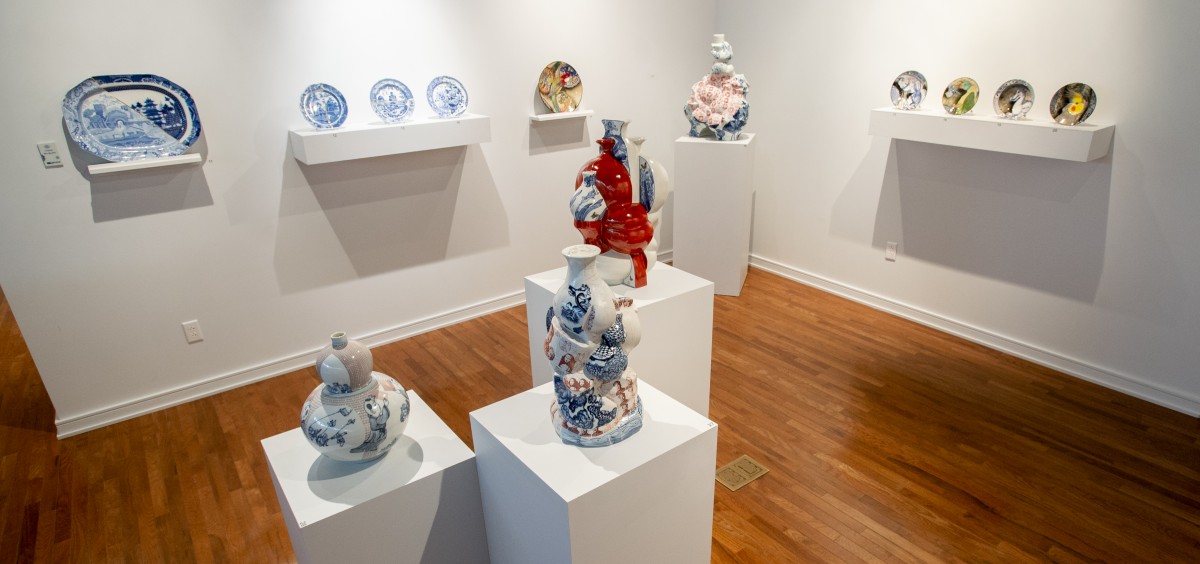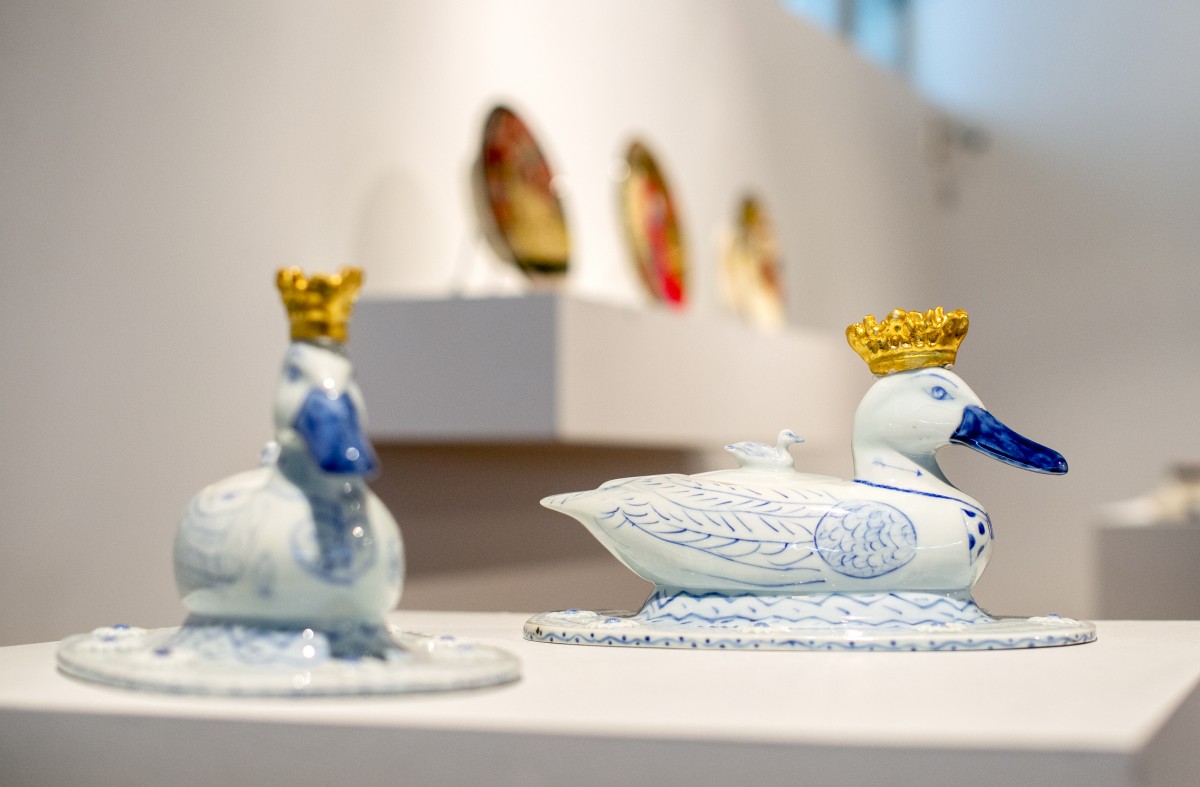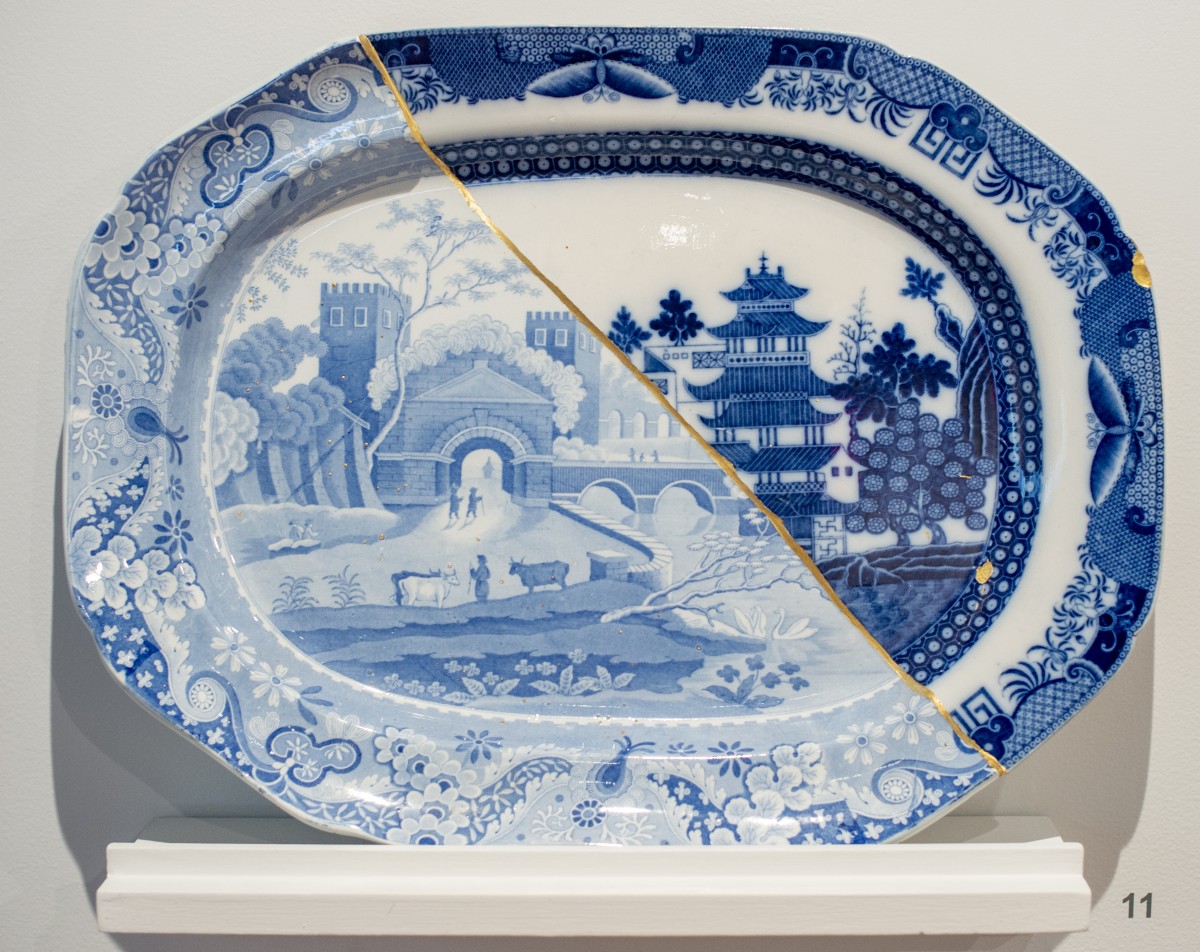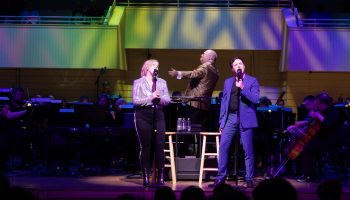Review by Melissa Kuntz
Rich traditions within the ceramic arts are given a new twist in the “Flora/Fauna” exhibition in the Strohl Art Center’s Arnold and Jill Bellowe Family Gallery, which runs through Tuesday. The four artists in this show reinterpret historic techniques to create thought-provoking works in clay. All the artists are represented by Ferrin Contemporary. Judy Barie, the Susan and John Turben Director of VACI Galleries, worked with Director Leslie Ferrin to develop this exhibition.
Although all works in the exhibition are not functional ceramics, they are all rooted in the processes of crafting functional pottery. Sin-Ying Ho’s pieces are like collisions of vases and abstracted sculptures, yet they do not necessarily lend themselves to use. She crafts them using multi-part molds, wheel throwing, cutting and pasting pieces together — constructing, deconstructing and then constructing again. The results are incredibly complex and visually stunning. Traditional one-fire techniques from Jingdezhen and hand-painted cobalt lines that were in fashion in the Ming dynasty in China are combined with digital decal applications; she merges antiquated and contemporary techniques. Conceptually, her work reflects the impact of globalization on culture. Growing up in Hong Kong, moving to Canada and then New York City, involved a constant negotiation of identity. The collision of Eastern and Western culture is a constant theme within her work. She combines symbols and decoration from Chinese porcelain with visual signs and icons that are familiar to Western culture. A spectacular piece, “Made in the Postmodern Era, series No. 1” exemplifies this. Hand-painted cobalt segments appear to be part of a Chinese vase that seemingly collided with portions of a contemporary-looking white crackle glazed pot. Digital decals of Leonardo da Vinci’s Vitruvian Man, Andy Warhol’s Mao and Monroe portraits and the Mona Lisa are printed onto the white areas. These motifs from both East and West cross boundaries of time and geographic distance and become a visual interpretation of globalization.
Mara Superior works in porcelain. She is a native New Yorker who made use of her proximity to the Metropolitan Museum of Art. Her work exhibits both love and knowledge of historical precedents in art and ceramics. “Mates for Life: Pair of Ducks,” are reminiscent of the familiar Chinese porcelain duck-shaped teapots. But these ducks don’t have handles or spouts. Instead, they sit on a flat base and wear golden crowns. One displays a bow tie and the other a cobalt-rendered necklace that reads, “mates for life,” with a diamond ring drawn beside it on the duck’s chest. The result is a playful interpretation of the duck teapot.
On display from Paul Scott are works from two series. Scott is an expert on printed vitreous surfaces and has authored books on printmaking techniques in ceramics. A work titled, “Scott’s Cumbrian Blue(s), American Scenery, Grain Silo No. 2,” is an example of this. The ironstone platter is adorned with a blue decal of a grain elevator, and rimmed and flecked with gold luster. Scott’s other series utilizes a technique based in the Japanese practice of repairing broken pottery with gold. Called Kintsugi, translated as “golden repair,” the technique dates to the 15th century, and is used to repair broken pottery with gold, silver or platinum. Instead of hiding breaks, and related to the Japanese philosophy of wabi-sabi, the idea is to see beauty in the flawed or imperfect. Of the three Kintsugi techniques, Scott’s is most like the joint-call technique which uses similar shaped pieces from other broken wares and combines two (usually aesthetically different) works into one unique piece. A work from the Cumbrian Blues Series, “Bridgeless Bridge Garde,” is a collage of two Minton found-object plates combined so that the bridge ends halfway across the span, meeting up with the gold line of the Kintsugi. The works are stunning, but also thought-provoking, post-modern interpretations of traditional ceramic techniques.
Finally, Stephen Bowers, whose influence is the Australian version of the 1970s and ’80s Funk Ceramics, creates works that are almost always functional. The images on the ceramics are hand-drawn and painted with impressive skill. He is also influenced by textiles, wallpaper patterns and natural history illustration, and his work contains ongoing motifs of cockatoos, kangaroos and other creatures native to Australia. His techniques are inspired by Staffordshire wares — the mostly earthenware pieces are created with layers of hand-painted decoration built up in stages across as many as six firings. Alongside the animals and birds one might find images of flora and fauna native to Australia. For example, in one of my favorite pieces in the exhibition titled “Eastern Rosella & Botanical (18th C. French Toile fabric print patterns),” the rosella (a bird) is perched atop a painting of a plate decorated with Toile pattern and behind it sit portions of three more plates. It is a playful take on decorating the plate with other plates that become “real” objects within the scene. The illustration is spectacular, and the colors used by Bowers are utterly stunning, but within the seemingly innocent decorations are often ironies and social commentary. “The Dodo’s Message” is a plate upon which is depicted a dodo in cobalt underpainting in front of a mottled backdrop. The dodo has small human hands emerging from cloaked arms, reminiscent of the hands of the philosophers in Raphael’s “The School of Athens.” This is fitting to the ongoing theme in Bowers’ work of the effect of settlement on the environment.
Altogether the craftsmanship, skill, playfulness and thoughtful reinterpretations of traditional ceramic techniques by these artists results in an exhibition of visually stunning works that are also conceptually meaningful.
Pittsburgh-based Melissa Kuntz is a professor in the Department of Visual and Performing Arts at Clarion University of Pennsylvania. She holds an MFA and an MA from SUNY Purchase. She has been writing art and book reviews since 2002 for publications such as the Pittsburgh City Paper, Canadian Art Magazine, The Chautauquan Daily and Art in America Magazine.








